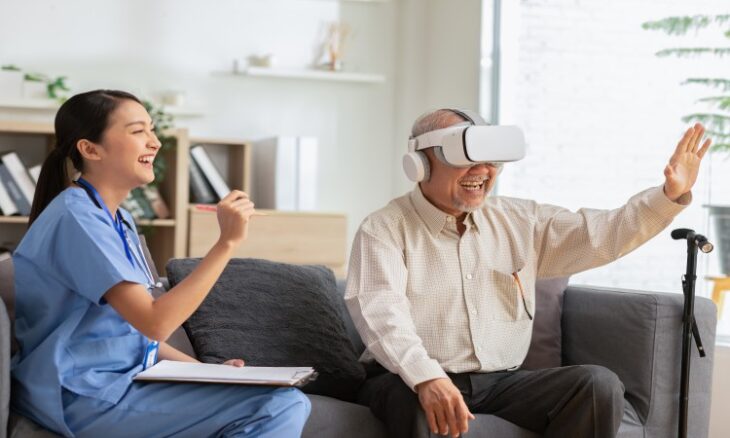VR Technology Advances Elderly Care and Fall Prevention
Researchers are making significant progress in using virtual reality (VR) to help prevent falls among older adults, including residents of nursing homes. A study conducted at George Mason University has investigated VR-based interventions designed to detect deficits in cognitive motor function and identify potential fall risk factors in older individuals.
The research aims to address the widespread fear of falling experienced by a large proportion of the elderly population. This fear can lead to reduced mobility, limited activity, social withdrawal, and an increased chance of future falls. By understanding how this anxiety influences movement, researchers hope to develop effective diagnostic and treatment approaches that reduce the likelihood of falls.
Falls remain the primary cause of injury among people aged 65 and over, with one in four older adults reporting a fall each year, according to the US Centres for Disease Control and Prevention. Although VR technology has generated interest within physical therapy circles as a possible tool to mitigate these incidents, its integration into practical clinical use has been slow.
Leading the initiative, researchers from George Mason University and Old Dominion University envision a future in which affordable VR technology could supplement or even replace some traditional diagnostic, therapeutic, and pharmaceutical methods for fall prevention. Backed by a 4-VA grant, their team has already tested the immersive VR system on more than 100 participants, including both younger and older adults, within controlled laboratory environments.
The system simulates walking in high-elevation scenarios. While initial use prompted some anxiety among senior participants, the level of discomfort tended to decrease over time. This pattern suggests that exposure to such virtual scenarios could help reduce anxiety about falls and improve mobility in the real world. The findings point to a potential role for VR as a clinical intervention, particularly for nursing homes seeking to enhance walking stability in residents who are fearful of falling.
In addition to fall prevention, VR is also being explored for its potential in dementia care. A separate project at George Mason University’s College of Public Health has been focusing on how the technology can assist in training nursing home staff who work with dementia patients. This initiative uses VR headsets to replicate the confusion, memory lapses, and fear experienced by those living with dementia, enabling caregivers to develop greater understanding and empathy.
The programme, developed in collaboration with a Japanese VR company, combines immersive simulations with online lessons and group discussions. It was piloted earlier this year at a nursing home in Northern Virginia, training 21 certified nursing assistants. Results from the pilot indicated improved knowledge about dementia and higher empathy scores among participants, despite the relatively small sample size.
Notably, many of the participating staff reported never having received formal dementia care training before. The programme was, for some, their first structured educational experience in this area. While recognising that VR is not a universal solution and may involve significant costs, researchers believe its ability to engage users and create realistic experiences makes it a valuable resource for long-term care settings.
With ongoing research in both fall prevention and dementia care, VR technology continues to show promise as a transformative tool in elderly care. As accessibility and affordability improve, its role in clinical and caregiving environments may expand, offering new ways to enhance the health, safety, and quality of life for older adults.









